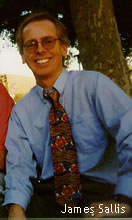|
WHERE DOES PHYSICAL EDUCATION BELONG IN OUR SCHOOLS?
by JAMES
F. SALLIS, Ph.D.
 Physical
education (PE) is at the intersection
of at least three major academic thoroughfares.
PE has roots in exercise and sports
science, and represents a primary means
of applying the science. PE is itself
a pedagogical field and is practiced
within educational systems. The public
health field claims PE as a health intervention
that is of increasing value due to the
childhood obesity epidemic. Major intersections
are often centers of culture and commerce,
but the turf surrounding PE is often
contested. Physical
education (PE) is at the intersection
of at least three major academic thoroughfares.
PE has roots in exercise and sports
science, and represents a primary means
of applying the science. PE is itself
a pedagogical field and is practiced
within educational systems. The public
health field claims PE as a health intervention
that is of increasing value due to the
childhood obesity epidemic. Major intersections
are often centers of culture and commerce,
but the turf surrounding PE is often
contested.
Over the decades PE programs in universities
have split from exercise science departments,
because they could not reconcile the
science and application missions. This
may not be too unfortunate, because
neither the scientists nor the PE practitioners
tried too hard to bridge the gap between
science and practice. Because all states
have some kind of school physical education
requirements, education departments
in universities and state governments
have no choice but to accommodate PE.
However, there is a notable lack of
enthusiasm for PE on the part of the
education establishment.
The federal Department of Education
provides little leadership or support
for PE. Many state education departments
refuse to hire a physical education
coordinator. After 100 years in the
schools, PE is not considered a core
subject, and education departments remain
unsure what to do with PE. The percentage
of students taking PE has declined in
recent years.
 In
my view, of the three disciplines, public
health has the highest level of interest
in PE because it is part of coordinated
school health, and physical activity
has many physical and mental health
benefits. The obesity epidemic has only
heightened interest in PE, because obesity
is seen as a crisis needing urgent attention.
But public health's interests in PE
are often not reciprocated. PE professionals
seem much more interested in gaining
status as a core academic discipline
than in ensuring PE is optimized to
benefit children's health. In
my view, of the three disciplines, public
health has the highest level of interest
in PE because it is part of coordinated
school health, and physical activity
has many physical and mental health
benefits. The obesity epidemic has only
heightened interest in PE, because obesity
is seen as a crisis needing urgent attention.
But public health's interests in PE
are often not reciprocated. PE professionals
seem much more interested in gaining
status as a core academic discipline
than in ensuring PE is optimized to
benefit children's health.
Can PE contribute optimally to both
educational and health goals? There
is a clear illustration that public
health's priorities for PE are not shared
in the PE field. The public health concern
is that PE is the only required time
for physical activity that affects almost
all students on a regular basis. Remember
that almost all of the school day is
enforced sitting. It is essential to
ensure that opportunity for activity
and health promotion is not missed.
The Healthy
People health promotion objectives
for the US adopted a goal that at least
50 percent of PE class time would be
spent in moderate to vigorous physical
activity (MVPA). Everyone is aware that
"PE is more than just physical
activity," but the objective does
not require that PE would be reduced
to exercise programs where students
run all the time. Active learning, less-active
skill drills, game play, and some didactics
would seem to fit comfortably in classes
that are at least 50 percent active.
But studies show 50 percent moderate
to vigorous physical activity (MVPA)
requires planning, and often training
and an appropriate curriculum.
 Major
studies funded by the NIH,
such as SPARK,
LEAP,
and TAAG
showed that activity levels can be raised
in elementary, middle, and high schools,
so the 50 percent 'moderate to vigorous
physical activity' is realistic and
evidence-based. In fact, the SPARK study
lead to the dissemination of the SPARK
PE curriculum across the United
States, and is currently a model for
evidence-based quality physical education. Major
studies funded by the NIH,
such as SPARK,
LEAP,
and TAAG
showed that activity levels can be raised
in elementary, middle, and high schools,
so the 50 percent 'moderate to vigorous
physical activity' is realistic and
evidence-based. In fact, the SPARK study
lead to the dissemination of the SPARK
PE curriculum across the United
States, and is currently a model for
evidence-based quality physical education.
The 50 percent MVPA objective was
announced in 1990, repeated in 2000,
and is likely to remain in the 2010
editions of Healthy
People. CDC's Community
Guide recommends "enhanced"
or highly active PE as an evidence-based
intervention to promote physical activity.
The public health community is strong
in its support for PE. However, to my
knowledge, no state education department,
no PE professional organization, and
no school district has adopted the 50
percent moderate to vigorous physical
activity objective as a requirement
or official goal.
This situation demonstrates the need
for ongoing dialog between education
and health departments at the national,
state, and local levels, to work together
to achieve multiple aims through excellent
PE. Because improved PE would benefit
health, perhaps part of PE's funding
should come from the health sector.
There are several examples of this approach
being effective, so it is a model that
could be expanded.
This article has been reprinted
with permission from SEEN
Magazine.
Dr. Sallis is a Professor of Psychology
at San Diego State University. His major
professional interest is developing
and evaluating programs to improve physical
activity and other health habits. He
is recognized internationally as an
innovator of programs to promote physical
activity and sports in children.
|



